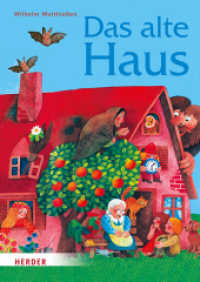Full Description
This edited volume proposes a theoretical reflection on the different artistic geographies of East-Central Europe (ECE) from an interdisciplinary perspective found at the intersection of art history, art and politics, and critical geography.
Contributors argue that this multiplicity is a defining feature of the region. At the same time, chapters employ the concept of "plural geographies" and call for an equal geography, based on solidarity and an equal distribution of capital, which could allow plural geographies to exist and be described. The "multiple geographies" of ECE consider the perspective of local conditions and emphasize how this region was part of successive empires with an important ethnic diversity and changing borders, giving it historical layers and multicultural characteristics.
The book will be of interest to scholars working in art history, political studies, cultural studies, and geography.
Contents
Part 1 Plural Geographies of East-Central European Art 1. Plural Geography(ies): Between Class Division and Relations of Production 2. Discontinuity. Considering East-Central Europe as a Discontinuous Space 3. Points East: The Geo-Epistemology of East European Art through Conference History 4. Capitalism, Geographies, the Racial/Colonial, and the Imperial/Colonial Divide Part 2 Multiple Geographies - Non-hierarchical, Flexible Mapping, and Non-mapping 5. Plurimodern Constellations: Scales of Analysis in the Spatial History of Art 6. The Hegemonic Gaze and East-Central Europe: Challenging the Totalitarian Paradigm 7. The Arts of Mapping (East Central) Europe and David Černý's Entropa 8. A Shift from the Geopolitics of Place to the Chronopolitics of Time in East-Central Europe? Part 3 Geographies of Peripheral Solidarity 9. The Alternative Geography of Socialist Cultural Internationalism: Transregional Artistic Solidarity between East-Central Europe and Latin America 10. Black Masks White Skin: Self-Identification with Africa in the Polish Culture during Late Socialism 11. From Postsocialist Geographies to Late Socialist Networks: The Role of Cultural Exchange with Non-Aligned Countries in Croatia and Yugoslavia 12. Transnational Zones for Museums and Archives between Latin America and Eastern Europe Part 4 Geographies of "Strategic Essentialism" 13. Inside the Trans/National: Feminist Geographies of Close Otherness in the Art of East-Central Europe 14. An Art History of Place 15. Atemporal Histories and the Geographies of East-Central Europe, or Why Have There Been No Great Moldovan (Performance) Artists? 16. A Different Narrative of Nonalignment? The Case of Socialist Albania in the Art History and Geography of East-Central Europe








